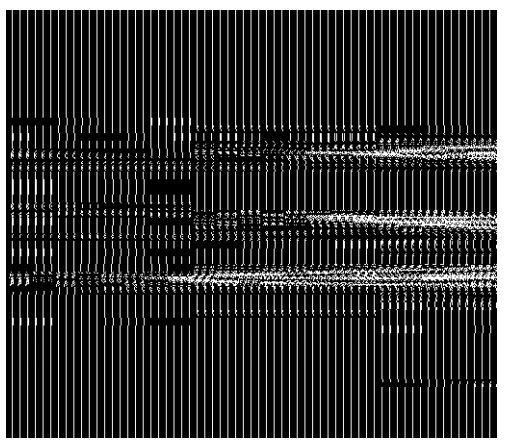Arachis Oil
| Home | | Pharmacognosy |Chapter: Pharmacognosy and Phytochemistry : Drugs Containing Lipids
Arachis oil is obtained by expression of shelled and skinned seeds of Arachia hypogaea Linn., belonging to family Papilionaceae.
ARACHIS OIL
Synonyms
Groundnut oil; monkeynut oil; peanut oil; katchung oil;
earth-nut oil.
Biological Source
Arachis oil is obtained by expression of shelled and skinned
seeds of Arachia hypogaea Linn.,
belonging to family Papilionaceae.
Geographical Source
South America (Brazil) is the original home of ground nut
and now found in South and Central America, Peru, Argentina, Nigeria,
Australia, India, Gambia, and other reasonably warm regions of all countries.
Characteristics
Groundnut plant is a small, prostrate, diffuse, erect,
branched, annual herb, 30–60 cm in height, leaves alternate with adnate
stipules and yellow papilionaceous flowers. After fertilization, the pedicel elongates
rapidly and enters the ground, where the ovary begins to develop into a pod
maturing in about two months. Pods or nuts are cylindrical, hard, reticulated,
indehiscent, and inflated, 2.5–5.0 cm long, one to three seeded, with pericarp
constricted between the seeds. The seeds are covered by a light or deep reddish
brown seeds coat, and consisting of two white fleshy cotyledons rich in oil and
proteins.
Fruits are dug out by raking the plants from the soil, seeds
are separated by machine and expressed in a hydraulic press at ordinary
temperature. The remaining oil of cakes is removed by solvent extraction. The
two oil fractions are combined and purified.
Cultivation
Groundnut is predominantly a crop of the tropical and
subtropical countries, up to an elevation of 1,160 m. It requires plenty of
sunlight, timely and evenly distributed rainfall (50–125 cm) during its growth
and a long season for its maturation and harvesting. It also requires a high
temperature (21–26°) particularly during the nights to induce early flowering.
The plant does not stand frost, long and severe drought and water stagnation.
Groundnut seeds are sown from April–May to June–July. It requires light,
well-drained, loose, friable soil. No regular manuring is done by the growers,
and the plant is benefited from green manuring.
Groundnut is susceptible to infection by several fungi,
bacteria, and viruses. Some important diseases in India are tikka leaf spot,
collar rot, dry root rot, stem rot, rust, bud necrosis, and yellow mould.
Groundnut oil is a nondrying oil belonging to the
oleolinoleic acid group of oils. It is pale-yellow in colour or almost
colourless liquid with a nutty odour and bland taste. Clouds are formed in the
oil at low room temperature. It has acid value 0.08–6, saponification value
188–195, iodine value 84–102; thiocyanogen value 67–73, and hydroxyl value
2.5–9.5. It is very slowly thickens and becomes rancid on prolonged exposure to
air. It is miscible with solvent ether, petroleum ether, chloroform, carbon
disulphide, benzene, and very slightly soluble in alcohol.

Chemical Constituents
The important constituents of the glycerides of groundnut
oil are the fatty acids palmitic (8.3%), stearic (3.1%), oleic (56%), linoleic
(26%), arachidic (24%), eicosenoic, behenic (3.1%), and lignoceric (1.1%)
acids. Myristic, hexacosanoic, erucic, caprylic, lauric, and trace amounts of
odd carbon fatty acids are also present. The principal glycerides of the oil
are triolein (11%), dioleolinolein (21%), saturated oleolinoleins (22%),
dilinoleoolein (12%), saturated diolein (15%), and saturated dilinoleoolein (6%).
The yellow colour of the oil is due to the presence of
carotenoid pigments, chiefly β-carotene and lutein. The
unsaponifiable matter consists of sterols, (campesterol, stigmasterol, β-sitosterol and cholesterol), sterol glycosides β-sitosterol-D-glycoside and others), and triterpenoid
alcohols (β-amyrin, cycloartenol and
24-methylene cycloartenol). Tocopherols occur free in groundnut oil. Squalene,
an unsaturated hydrocarbon, occurs in extremely small amounts in the
unsaponifiable fraction. Two other unsaturated hydrocarbons, hypogene, and
arachidene, have also been reported.
The kernels contain fixed oil (40–50%), proteins (26.2%),
water (1.8%), carbohydrates (20.6%), ash, and high concentration of thiamine.
The chief proteins are arachin and conarchin, both are globulins of different
solubility. The vitamin content of groundnut is moderate, the largest being in
the episperm.
Uses
Groundnut oil is used as an edible oil, in control of
pasture bloat, as a substitute for Olive oil, as a solvent in pharmaceutical
aid, in hydrogenated state as shortening, in mayonnaise, in confections; for
the manufacture of margarine, soap, points, liniments, plasters, and ointments,
as vehicle for intramuscular medication and in the laboratory as heat transfer
medium in melting point apparatus.
Marketed Products
It is one of the ingredients of the hair oil known as J.P.
Nikhar oil (Jamuna Pharma) and Sage baby oil (Sage Herbals).
